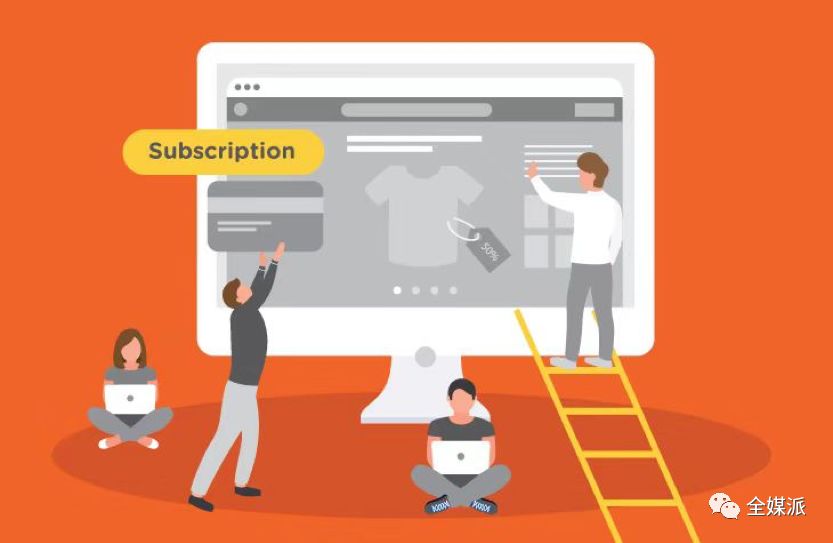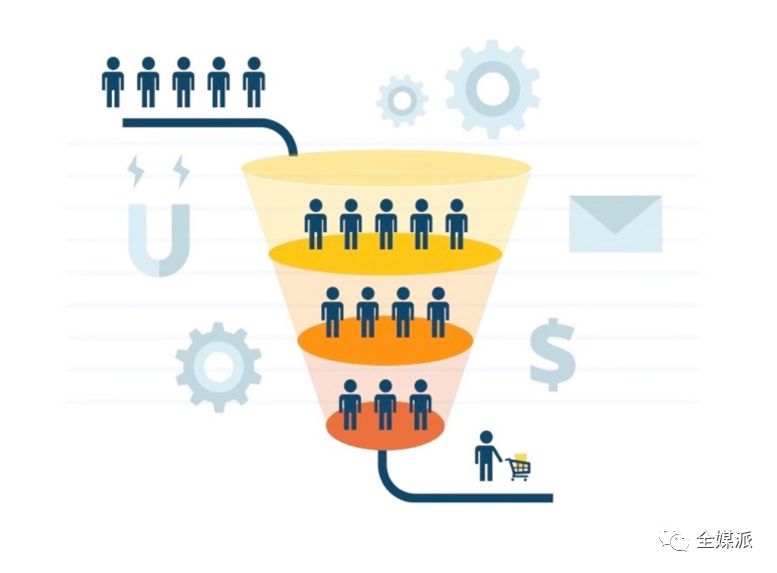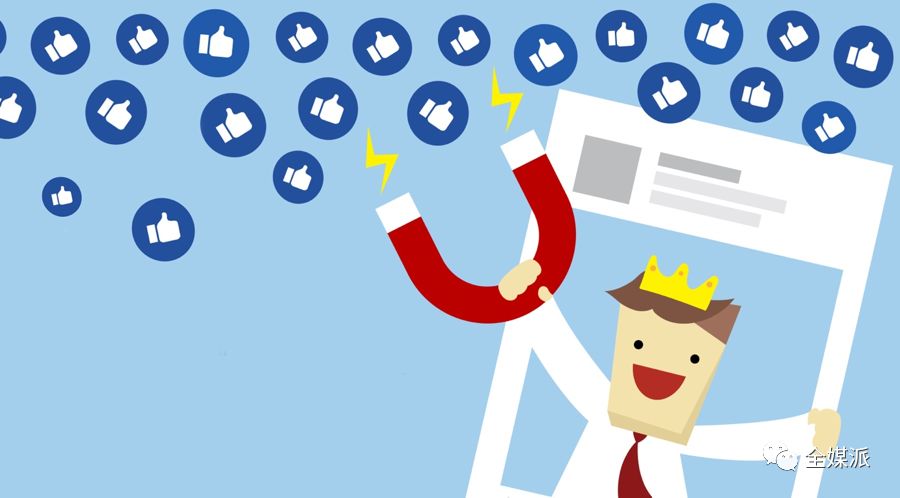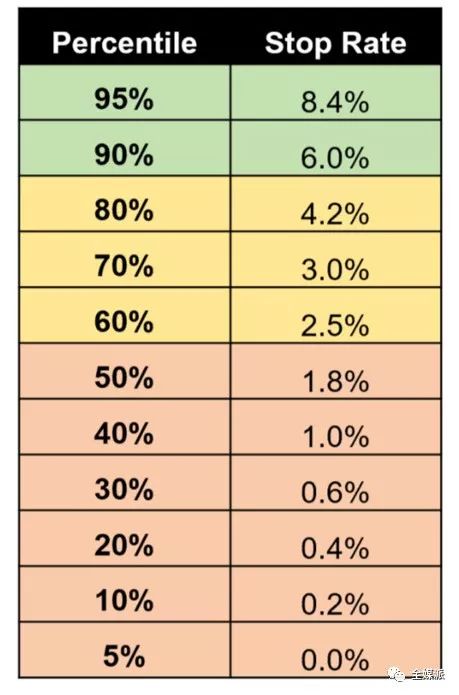Blindly follow the trend will only go against the flow, please accept this guide.
Editor’s note: This article is from the WeChat public account “All Media Party” ( ID: quanmeipai), author Tencent Media.
Where does the content payment go after the digital transformation of the journalism industry?
Reuters research has shown that in 2019, 76% of the media interviewed have adopted a content-paid business model. Today, the contestants of digital subscriptions are coming to the changing intersection. How to effectively attract readers and convert subscriptions has always been the “Sword of Damocles” hanging over the industry.
The researchers from the Shorenstein Center and the Lenfest Institute conducted research on more than 500 media outlets in the United States between 2011 and 2018, and released research results in August this year, trying to answer all kinds of puzzles under the subscription. .
This issue of the full media (ID: quanmeipai) compiled the results of the survey, by combing the status of digital subscriptions in overseas media, together with the content-paid track in the second half How does the media correctly follow the trend?
The main conclusions of the study: /p>
Digital subscriptions are welcoming a “Renaissance.”
For the newsroom, market indicators and best practices are constantly changing.
This indicates that the news market will usher in a long-term stable phase.
Industry metrics are critical to the development of strategies.
Market penetration, audience engagement, paywall stop rate, conversion rate, and retention rate will be key metrics for measuring the success of a subscription.
If you want to increase your subscription conversion rate, you must be reader-centric, conduct targeted marketing campaigns, and streamline your subscription payment process.
In addition, through pricing testing and other means, in-depth understanding of the reasons for subscription loss, find ways to increase user engagement, to improve retention.
The media must constantly innovate to retain the attention of readers.
Subscribe to the best performing news organizations is oftenThose for premium content.
This shows that the innovation of high-quality news itself should be a long-term focus of the journalism industry.
Highlight moments for digital subscriptions
Many for-profit news media are facing the “revenue trap” of digital advertising.
In this business model, page views are an important indicator.
Browsing-driven digital advertising models have spawned a low-cost, high-volume way of doing things, rather than encouraging high-quality, independent news, which may be contrary to the heart of journalism.
When digital subscriptions become the business model of the media, user retention and stickiness are critical. In order
To attract and retain readers, the media must produce content that is valuable to the user, and the business objectives of the news organization are more compatible with the values of the editorial office.
The results of this study show that consumers of digital news are indeed willing to pay for high-quality content, and media that have achieved significant growth in digital subscriptions have revenues nearly 10 times higher than the industry median.
Based on this Superiority, researchers also advocate a subscription-centric business model.
In the past five years, digital subscriptions have grown rapidly.
Although most news publishers, especially the newspaper industry, have established a basic digital subscription model, everything has just begun and the situation has become more complex.
To get out of a beautiful flower path, you must continue to explore more sophisticated industry indicators and business models.
Best demonstration of content payments
The digital subscription model can be simplified with a funnel model.
The broad top of the funnel represents a broad potential market, with a narrowing neck representing user participation and a bottom representing paid loyal users.
The media observed in the study basically revolve around the above modes: user acquisition → user participation → user subscription and retention. The ultimate goal is to broaden the “funnel” to achieve a growing share of subscriptions.
Through more than 500 newAccording to the research of the organization, the results show that the best performing media has done the following:
Clearer user market
After observing the entire news organization and market dynamics, the researchers found that the best performing media tends to build their digital strategy in a more targeted market. And limit the optimal service to this user group.
When measuring their markets, news organizations focus on their digital readers in the region and their corresponding independent visits, namely market penetration.
Although market penetration is not the most reliable indicator in measuring the success of the media, it can reflect the influence of the media in a certain region.
Using this indicator as a measure, Minneapolis Star Tribune Network and Boston Globe Media Sites have the highest market penetration.
The former has a market penetration rate of 31%, almost twice the median value of the industry, and the latter 23%, ranking second among all the institutions surveyed. The excellent results of these news organizations show that in a market they care about, a media company is likely to generate huge digital needs if it can ensure that it becomes a unique and important source of news.
Both companies are early adopters of paywalls and metering devices.
This business model means that the importance of user engagement is better than advertising revenue, and it is easy to form a reader-centric operational strategy.
This strategy helps them form a virtuous circle of high-quality reports in their respective markets, resulting in more user subscriptions and more ongoing user engagement.
More precise audience engagement
Researchers surveyed 15 metropolitan newspapers found that 68% of their digital audience saw an article within 30 days;
23% of readers read 2-5 articles in 30 days;
For fixed users, which accounted for only 9%, the number of articles read in 30 days exceeded five.
Take the “iron powder” and grasp the core people who pay for content.
Media with high user engagement tends to have more “iron powder.”
The media with a fixed user ratio above the average (9%) is exactly those heavyTarget audiences, such as social media content promotion, professional newsletters, and audience development teams.
In addition, user engagement is one of the main indicators of retention rate. It can be used to promote more monthly renewals.
Through participation, you can also check the success of the media.
Among the media surveyed, the top 10% of news organizations have reached almost three times the user participation.
More “吝啬” paid threshold
In terms of the payment threshold, most media are too “generous” and need to increase the “stop rate” to force readers to convert to paying users.
The so-called “stop rate” refers to the percentage of all digital users that are blocked by the subscription prompt, the paywall, and the meter.
The rate of cessation can be derived by dividing the number of people who are blocked from reading by the number of independent visits during the period.
The rate of stoppages is often a sign that distinguishes whether the media is outstanding.
Most newspapers only stop a small percentage of readers, and those with better digital subscriptions have a much higher rate of media stoppages.
Among the 500 media surveyed, the industry median value was 1.8%, while the top 20% of the media reported to the researchers the stop rate was above 4.2%.
From By definition, a low stop rate means that only a small percentage of readers will subscribe, and the subscription ratio may be insufficient.
What should I do to improve the stop rate?
The answer is – tightening pricing rules, increasing user engagement
. As far as the former is concerned, the mediation rate of most media is becoming more and more “deaf”.
Take the New York Times as an example, setting up a paywall for the first time in 2011.At the time, readers can read 20 newsletters a month for free, and now it has dropped to five.
Since 2012, the number of articles that can be read free has dropped from an average of 13 to 5, and more than half of the media currently offer free reading limits of 5 and below.
and the latter The proof is:
The average stop rate of the powerful metropolitan newspapers is 3.64%, about twice the industry average.
These media often throw huge sums of money in audience development, social media campaigns, news newsletters to increase audience engagement.
Easier payment process
In the process of converting readers into paying users, “conversion rate” is another important reference metric that refers to the percentage of users who are ultimately blocked by the users who are blocked by the paywall.
It and the stop rate can help news organizations effectively predict subscriptions.
Among the 500 media surveyed, the top 10 news organizations have an average conversion rate of 1.3%, which means that 1.3% of all readers blocked by the paid wall are converted to subscribers. The number of digits is only 0.5%.
Conversion rate is an important indicator of the performance of media subscriptions.
Data from 10 major metropolitan newspapers shows that once users enter the bottom of the “funnel”, the stage of conversion to a subscriber, the number of users drops by an average of 90%.
29% of readers will read the paid offer provided on the page and provide their own email account;
Next, only 14.8% of users entered their own payment information;
In the end, only 9.9% of readers broke through the fence and pressed the payment button to complete the subscription.
These subscription steps Just like a layer of screen, more than 90% of users opt out during the payment process.
This is more common on mobile clients, where the desktop conversion rate is five times that of mobile phones.
Therefore, any “inconvenience” that may be encountered can have a significant impact on conversion rates, such as long page loads, unclear descriptions, redundant fields, and difficult to understand quotes.
For subscriptions that excel in performance, the details determine success or failure.Every step in the optimization of the subscription process is the key to success.
In addition, the platform is also working to simplify steps such as Facebook Instant Articles, Facebook Analytics, Google, and Apple’s iOS subscription plan.
Deeper Reflections on Brain Loss
Performed media tends to have a deeper understanding of why subscribers are losing—whether it’s unsubscribing or payment failure.
Currently the best performing media began to develop the option of message testing, hoping that users’ subscription and retention conditions have reliable data support, and establish a data-driven, continuously optimized operating model.
After reflection, the media should make improvements:
Optimizing the highlights, past stories, and producing innovative products on a regular basis helps users perceive the value of news brands and increase sustainable subscriptions.
Under the wind, go ahead
The second half of the digital subscription has started and everything is getting more complicated.
First, this publishing model sets new reference standards for the industry, such as stop rate, conversion rate, retention rate, and more.
As mentioned above, the media began to test the effectiveness of news content, hoping to provide a reliable reference for the optimization of subscription services through specific data feedback.
The stop rate, conversion rate, and retention rate defined in this study are generated by data provided by more than 500 media, and thus become an industry reference.
In addition, the importance of user engagement is becoming more and more important.
The media began to introduce attractive and customized content;
Trying to shape your own news brand into a resource that helps readers live better;
Grasp the clear positioning of values and cater to your audience;
Provide reader-centric content to reduce user churn.
Notable Yes, in the context of taking into account these operational constraints, not all content can apply this business model that promotes each other.
But by mimicking the excellent style of play in the industry, it may help the media to increase user engagement, establish a stable subscription group, and begin to reduceReward the income.
Under the popularity of subscriptions, content payment seems to have become a must for the industry.
The tuyere does exist, but it is unacceptable to follow the trend blindly. You may wish to see the sages and the shackles, and see where the wave of subscriptions will go.







